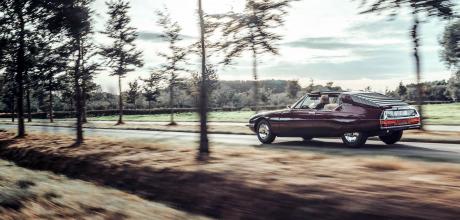1971 Citroen SM Espace - Heuliez's head-turningly individual Convertible
Remarkably, the collection that boasts the world’s fastest Citroen also yields what is arguably the most beautiful. Words Marc Sonnery. Photography Dennis Noten.
HOW TO REALLY TURN HEADS
In DrivesToday, we featured theworld’s fastest Citroen SM. Now let us introduce what is certainly the most individual. In 1971, the SM’s designer Robert Opron visited coachbuilder Heuliez and had lunch with a new member of design staff who would become key to a special project. It would be called the SM Espace and the man was Yves Dubernard.
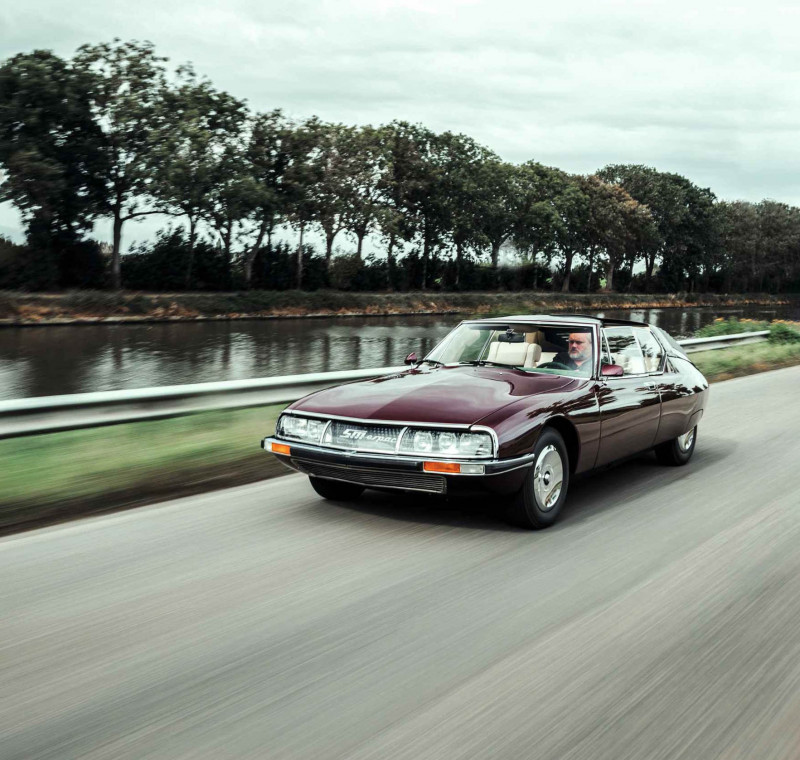
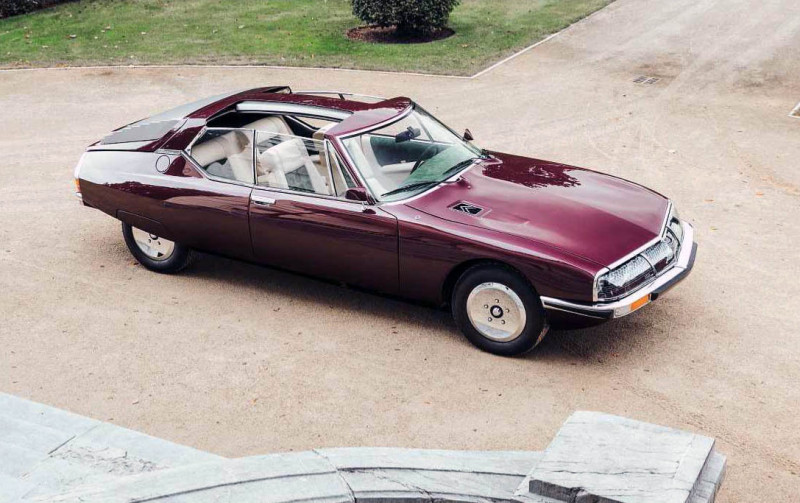
Heuliez was founded in 1920 and based in Cerizay, a little north of La Rochelle in western France. As well as buses and coaches, it had produced bodies for trucks and vans by French manufacturers, from the small and long-forgotten to the large and well-established. In the late-1950s and 1960s it moved into prototype design and development, including the building of limited-production models such as station wagons and convertibles. Its collaboration with Citroen dated back over many years and included special versions of the iconic H van.
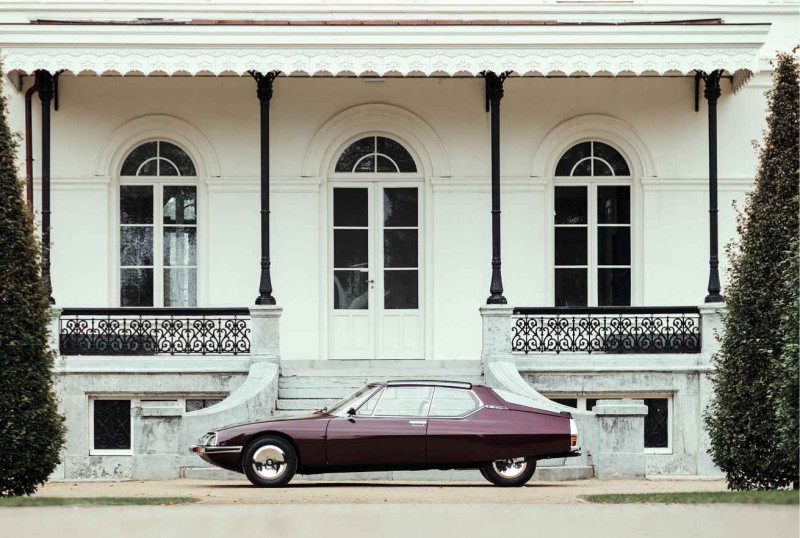
In 1970, far more so than any previous Citroen, the brand new SM was a prestigious and attention-grabbing base upon which to develop a project to bring publicity and new business. Dubernard was self-taught but had spent time at the Beaux Arts schools in Lille and Besancon.
‘The cratered seats are couch-comfortable and the ceiling lights along the central T-bar are pure boudoir’
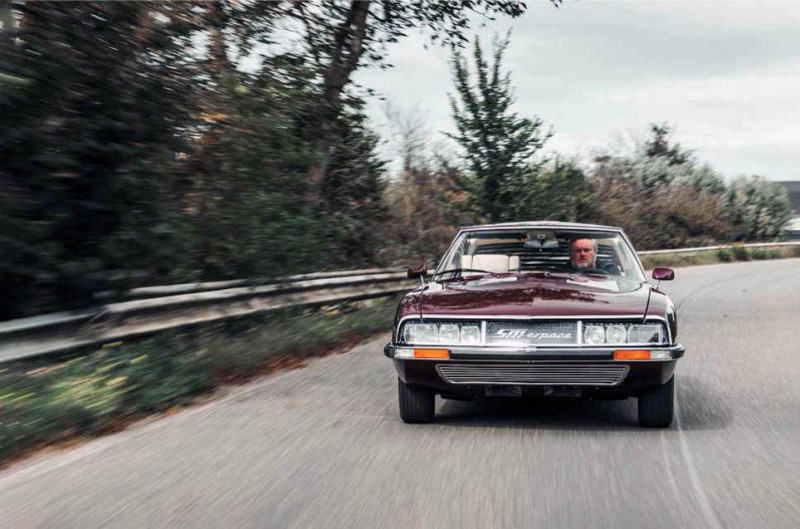
‘The latter had just created a three-year course leading to a diploma in industrial aesthetics, which I abandoned to present myself at the Peugeot study centre in La Garenne- Doves with a thick illustration board full of car drawings,’ Dubernard tells me. ‘I was hired in 1965 and moved in 1969 to the Simca style centre at Poissy, but that was closed in 1971, so I offered my services to Heuliez. And the Espace project began to take shape during lunch with Robert Opron on the very day I started.’
When open it is an absolute delight to drive, truly the best of both worlds’
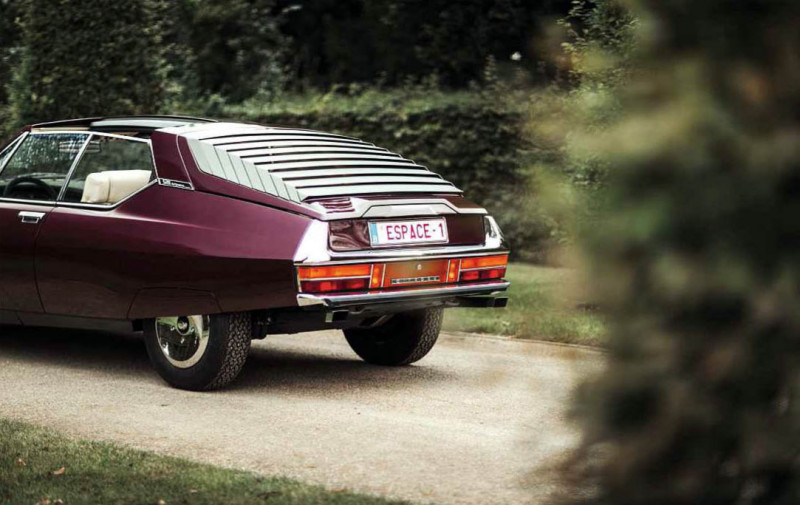
From both sides came ideas for an opening roof made from interlocking slats and a model was soon in progress at the Heuliez design office. The name Espace followed — as this was the height of the space race — and it made its debut at the 1971 Paris Salon. With its opening slatted roof above the passenger compartment, louvred rear windows over the luggage area, polished aluminium hubcaps and rectangular chrome exhaust tips, it was quite the sight. Aubergine livery and a two-tone butter and green interior with crater-like hollows in the seats made it the glamour queen of the show.
The Espace was subsequently displayed at Brussels, but with a toned-down interior: the wilder original had been considered a distraction. Similarly, the rear louvres had vanished and the shiny hubcaps had been replaced with production versions. Despite these changes, Citroen chose not to pursue the Espace and Henri Heuliez, grandson of company founder Adolphe, had it repainted in his wife’s favourite SM colour, Bleu Delta, and kept it.
Another Espace was then built for a close friend of Heuliez, and survives to this day in a prominent SM collection in northern France, in two-tone black over Blanc Meije. Rumours abound of a third car, but, before these two, only a bare bodyshell had been used for testing the roof mechanism and it was then scrapped.
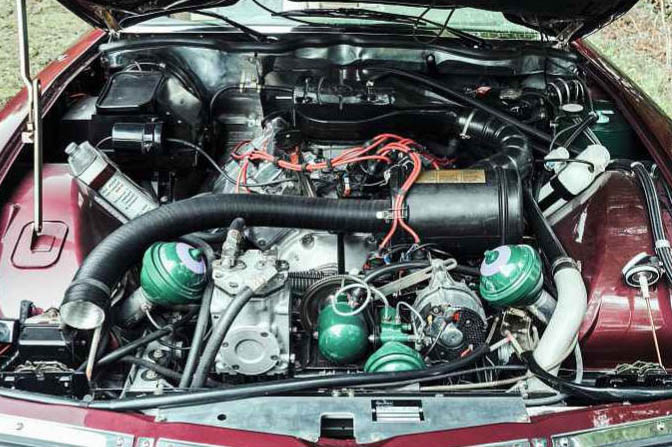
Heuliez went to great lengths to patent the system in France, Germany, Great Britain, Italy, Belgium, Luxemburg, Holland, Japan and the USA. Indeed, there was a genuine US adventure for our car, as it was shipped overto be shown to manufacturers in an attempt to obtain contracts, as Dubernard recalls: ‘The Espace was taken to Chicago in 1978. There is a photo of it alongside a boat owned by Earl Moloney, who was a specialist in converting Cadillacs and Lincolns into stretch limousines. A Cadillac Eldorado was fitted with the slatted roof for development in the US.’
One Cadillac would not spring an El Dorado of sales for Heuliez, though: sadly it was an ill-fated campaign. A brochure was made but it was poorly translated, and merely the sight of the drawing, showing the bewildering number of parts needed to assemble the slatted roof mechanism, was enough to send Detroit’s engineers and accountants running for the door. Heuliez’s team returned home empty-handed.
And thus Heuliez faced its eventual demise as the industry shifted away from coachbuilders, and their creative freedom became ever more strangled by strengthening regulations and the replacement of separate chassis with monocoques. Yet there’s a case to be made that the Espace was the precursor to subsequent T-tops.
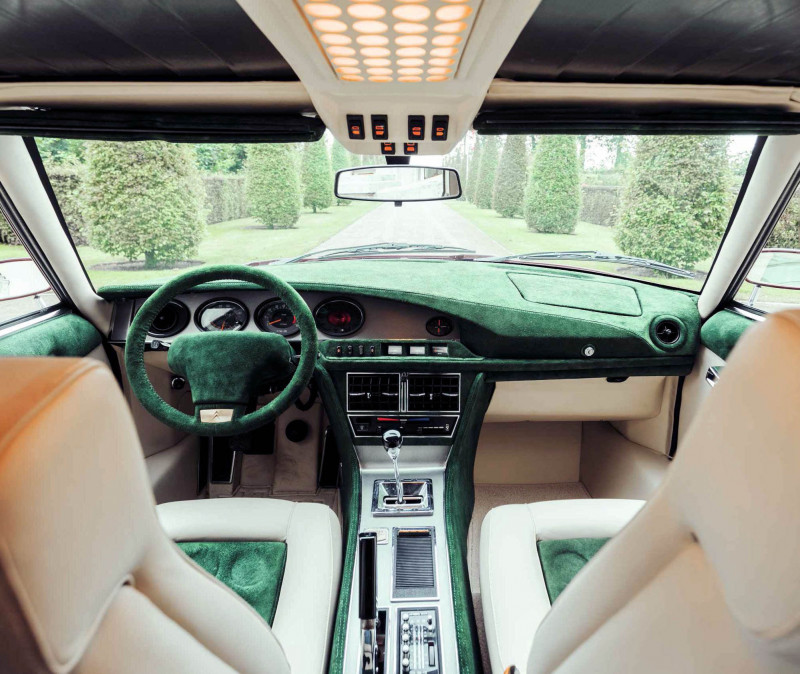
It certainly gave the concept a lot of exposure in Europe, where such a thing had not been seen before, but as DrivesToday contributor Dave Kinney points out, credit is due to the American stylist Gordon Buehrig. He first showcased it in 1948 on the one-off Tasco by the American Sportscar Company, and patented it, too. The concept was then copied 20 years later with the 1968 Corvette, which prompted Buehrig to sue, though with minimal financial compensation. Pragmatic Americans stuck with the intermediate T-top solution with removable panels seen on the likes of Burt Reynolds’ Pontiac Firebird in Smokey and the Bandit.
No European manufacturer adopted the T-top configuration for any significant vehicles. One silver Ferrari 365 GT4 2+2 was modified by Fly Studio in Italy by exfactory racing department engineers Giacomo Caliri and Luigi Marmiroli for fashion entrepreneur Etienne Aigner — quite possibly inspired by SM Espace photos. And a Maserati Khamsin, fitted with a tinted glass T-top in California by the local importer, was offered to the factory for technical review. However, when Maserati said it would have to be shipped to Modena for approval, the idea was ditched, so it remained a one-off. The last T-tops built were the 2002 Chevrolet Camaro and Pontiac Firebirds, though the configuration had been popularised worldwide in the 1990s by the Toyota MR2 T-bar.
Alas Heuliez, having produced limited runs of Citroens such as CX station wagons, CX and BX ambulances and the Visa decouvrable, closed in 2013 after efforts to keep it afloat failed. Among its last jobs, ironically, had been retractable roofs for VW and Lamborghini (see the Lamborghini Pregunta).
Our SM has led a quiet life. It was given a fresh coat of Bleu Delta and shown in various years at Retromobile and in the lobby of the Citroen headquarters at Neuilly-sur- Seine. An Artcurial auction at Le Mans Classic in 2012 dispersed the cars still in the coachbuilder s possession and the Espace was among the lots. It was acquired by Denis Joannon, who knew SMs well since he had previously been a Citroen dealer. Joannon displayed it at the Chantilly Arts et Elegance concours in 2015.
The Belgian collector and SM aficionado Thierry Dehaeck first met Joannon at the 2018 Retromobile salon. They eventually agreed a price, negotiating around the fact that Joannon had given the car to his daughter, Isabelle. In conversations with friends and specialists it became clear that the right thing to do was to restore the Espace to how it had appeared at the 1971 Paris Salon. And Yves Dubemard became an instrumental and very active chaperone during that process.
Once the car had been dismantled, traces of the original Aubergine paint were found behind the rear bumpers, rear lights and under the bonnet. The mechanical restoration was straightforward as it is all standard, but much of the body is bespoke and involved many challenges.
As for the telescopic roof and its slats, there was no guidebook to help. Its little electric motors had gone on strike many years ago, so the roof had been pushed and pulled by hand ever since. Dehaeck’s team took it all apart, rebuilt the motors, restored every single component (there is a mind-boggling number of them) and replaced those that were worn out, which meant machining new ones. On a regular SM the rear side windows are fixed, but those on the Espace open with the roof, and again it’s a bespoke mechanism — with no instructions.
Anecdotally, this had not been ready for the 1971 Paris show, but it was fixed just in time for the publicity photoshoots afterwards.
One particularly challenging task was making the rear glass cover blades align properly, a source of much frustration until a wooden buck was made. The louvres were designed in 3D and then fabricated in aluminium. Installation was painstaking, so as not to damage the paint. Replacing the wheel covers called for a brass master to be machined from scratch; likewise the rectangular chromed exhaust tips. There was more bespoke work inside, to create new front seats with moon crater’ indentations.
The rebirth was complete by February 2021. It feels surreal, now, to be handed the keys to a one-off I had admired in magazines as a kid — I remember showing a photograph of it to a schoolfriend whose father was hesitating over which car to buy.
The exterior is pure show car; it looks somewhat incongruous on public roads, though its elegance overpowers any misgivings you may have had about Dubemard’s reworking of Opron’s original masterpiece. It is simply ravishing. Then you settle into the unique interior; the cratered seats are couch-comfortable and the ceiling lights along the central T-bar strike you as very 1970s, pure boudoir or powder room. Visibility through the rear louvres is best decribed as sufficient.
After first lowering all the windows, including the rear ones, the roof is opened via buttons located in the roof console: you can retract each set of slats independently. It’s all very UFO-ish and must have stopped traffic and dropped many a jaw half a century ago. The rest of the controls and the driving experience are standard SM but the beauty of this open-roof concept is that there is no scuttle shake at all; rigidity seems identical to that of a standard SM.
There were, of course, limitations to the complex opening mechanism, and not only the intricate nature of the slats — which could get stuck. We don’t have that problem today but must admit that Thierry has asked us not to open and close them too many times, a wise request that we duly observe. On the motorway, when the roof is closed, there is some wind noise as air meets the slats, though better isolation could have solved that — indeed, the owner of the other Espace reported hearing no bruit de vent in his. We also find that it isn’t fully watertight...
But no matter! When open it is an absolute delight to drive, the unique T-roof configuration cocooning you like in an enclosed car while the retracted slats give you all the pleasure of a convertible: it’s truly the best of both worlds. Any SM glides regally and effortlessly above the road surface, of course, but to do so while topless gives the driver and occupants as serene and pleasing a ride as one can experience, akin to yoga in motion. The ability to drive with all the side windows open is an experience the standard SM denies.
In traffic, it is interesting to notice how much quiet admiration the Espace’s glamorous but sober design attracts. Not surprisingly, only a few days later, it would go on to wow the judges at the Zoute Concours and win first in class.
Where, then, does this leave the Espace in historical perspective? It remains today as Heuliez’s most prestigious child. Above and beyond that it stands as a last design hurrah of the final years of les trente glorieuses, the three decades of bullish economic and industrial post-war growth before the 1973 energy crisis ended it all. The SM symbolises that era of France far beyond any other car and, fussy slats or not, this Heuliez creation is the most glamorous of all of them. Surely the likes of Coco Chanel or Yves St Laurent would have fallen silent in admiration in front of it, just like the rest of us.
THANKS TO Courtrai rose garden, rozentuinkortrijk.be
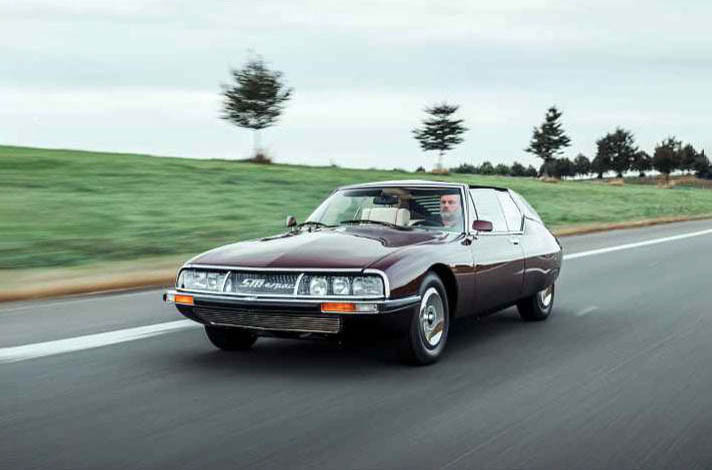
Left and below
Open-top driving is a novelty in a Citroen SM; the Heuliez Espace as displayed at the 1971 Paris Salon de I'Automobile
Wild interior has been restored to how the Espace appeared at the Paris motor show in 1971, with ‘moon-crater’ seats and extraordinary roof console.
Below and right Maserati V6 and Hydropneumatic suspension are standard SM; retracting longitudinal roof slats and opening rear side windows open up the Espace.


